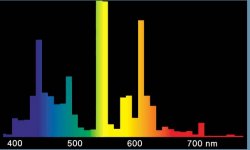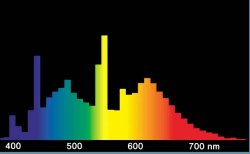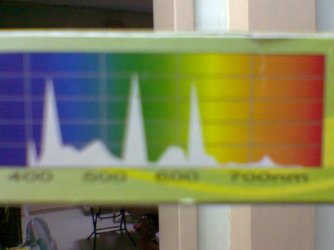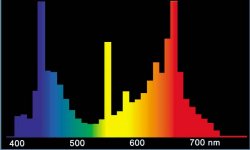before someone tell you the get a hight CRI.
from Richard J. Sexton <richard/aquaria.net>
I'm seeing a bunch of statements here about fluorescent tubes
that leave me shaking my head.
"Plant and aquarium" tubes are gro-lux wide spectrum. They're pink,
not yellow or orange. Regular gro lux is purple.
They have huge spikes in the red and blue ends of the spetrum,
almost no yellow or green and do not put out any energy in
non-visible ends of the spectrum. The cri is something like 65;
cri just means how close tosunlight it *appears* to the human
eye and has nothing todo with how well it will grow plants.
Chroma 50's emulate sunlight. The CRI should be a lot higher than
the numbers I've seen mentioned here. The C50 simulates noon
day equitorial sunlight. The C75 emulates noon day northern
sunlight.
I can't imagine what would make poeple think C50's or PL-AQ's
look "yellow" or "orange". A warm white might give you this
impression, but a C50 has a decidely blue tinge to it, and the
PLAQ's are quite pink.
I think some of you people are color blind!

- --
Richard J. Sexton richard@aquaria.net
Maitland House, Bannockburn, Ontario, Canada, K0K 1Y0 +1 (613) 473 1719






 /www.adrianxw.dk/personalsite/oddsan...hlorophyll.html
/www.adrianxw.dk/personalsite/oddsan...hlorophyll.html

